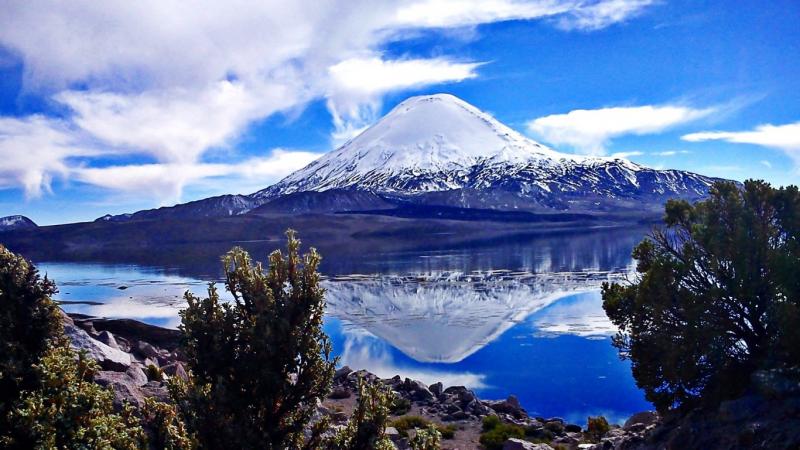
Advice Guide: Hiking in the Chilean Andes
By Peter Graham
Hiking can be a difficult but rewarding activity, but the good news is that nearly everyone can do it with the right preparation and organisation. The Chilean part of the Andes mountain range offers some breathtaking sights, sometimes literally as you’ll feel the effects of the high altitude kick in, but if you’ve trained correctly and are clued up about what to expect and how to react when the unexpected happens, you’ll have an unforgettable experience.
Preparation
Preparation and training is the most important part of hiking, especially when you’re going to be hitting the trails in a foreign country. If you’ve never hiked before, it’s important to train your body for what lies ahead, much in the way that you would train for any other endurance challenge like a marathon. Trekking the Andes is a challenge that isn’t for the faint-hearted, so having any prior experience in hiking will be invaluable.
· Decide how you’re going to take your trip: will you book with a trekking company and get all bells and whistles attached, enlist the aid of a lone guide or simply go it alone? Booking a trek means less to worry about but will cost more. Lone hikes are not wise for beginners, especially if you’re going to be travelling to Chile from another country. Companies specialising in tours will usually provide a lot of the equipment- one less thing to worry about.
· Train: Starting with small distances and carrying small weights, building up to longer distances, greater elevations and the weight you’ll realistically be carrying is the best way to prepare. Don’t rush yourself or watch the clock, hiking is about the experience, not a race. Once you get up in the Chilean Andes you’ll be glad you put in the preparation as you’ll be able to stop to enjoy the magnificent views or do a spot of wildlife-spotting, instead of stopping because you can’t continue!
· Get kitted out: The first priority is to get a good pair of hiking boots and break them in gradually over the course of your training- your feet are going to be the most important tool for the trip, so it’s worth investing in them. A good backpack with a waist strap can also reduce back strain but don’t be tempted to fill up all the space as big backpacks can get very heavy and this will impede your progress.
· Research: Good things to look into are shelter or campsites, survival techniques such as lighting fires and finding water, first aid and trail etiquette. It is a very good idea to enlist a guide for trekking the Andes, since they are likely to have walked the route many times before and will be clued up on what to expect. Even if you have a guide, keep a map and compass on you, if you get lost they can be invaluable aids to returning to civilisation safely.
What to take
· Shelter: Whether or not you’ll need to think about this too much depends on where you’ll be staying or what type of trek you’ve booked. If you’ve got developed campsites or ready-pitched tents to look forward to, less planning is required than if you’re going to be camping entirely in the wild. Some lone hikers prefer tents for privacy, others swear by a hammock and tarpaulin to keep off rain. Either way, keep in mind climate, any bugs or animals you are likely to encounter and carry weight when you are making your choice. A torch or headlamp is useful for everyone regardless- there will be no light in the mountains other than moonlight.
· First aid kit: Your guide or trek leader should be responsible for keeping everyone safe, but it’s a good idea to prepare your own kit as well. You can buy basic first-aid kits that will suffice, but don’t forget to add things like blister plasters and altitude sickness pills. Consult a doctor or pharmacist before buying or taking these types of pills. Your doctor can also tell you if you need any specific vaccinations before you travel.
· Clothing/ other items: A hat with a broad brim is essential for sun protection, and should be teamed up with glasses and sun lotion. Clothing should be made of synthetic fibres and not cotton, this is especially important for tops. A wind fleece or soft jacket is a good idea as nights can be cold and high altitudes are also cooler. A light waterproof jacket and lightweight socks completes the ensemble. Wool is a good material for socks as they stay warm even when wet. A specialist camping or hiking shop will be able to help you pick out the most suitable items for your trek. Don’t forget toiletries and insect repellent.
The Chilean Andes with their sweeping vistas, unusual wildlife and unique trails are ready and waiting for you to discover them, and perhaps you’ll discover something about yourself in the process. Many people who have hiked these beautiful mountains come back saying that it wasn’t only a physical experience, it was a spiritual one as well. By being prepared and leaving a lot of the details to your trekking company- that’s what they’re there for, after all- you can take a little strain off your own shoulders and really make the most of your once-in-a-lifetime trip. Don’t forget to take your camera to capture all those memories to treasure!
Share this article:




















